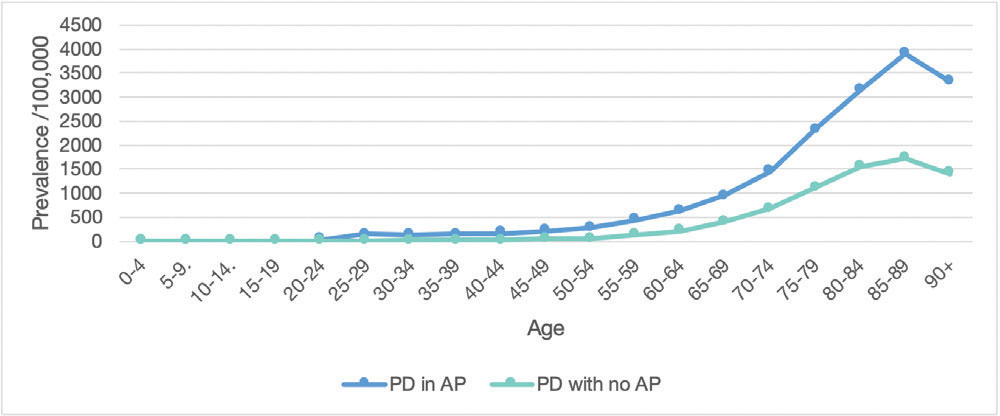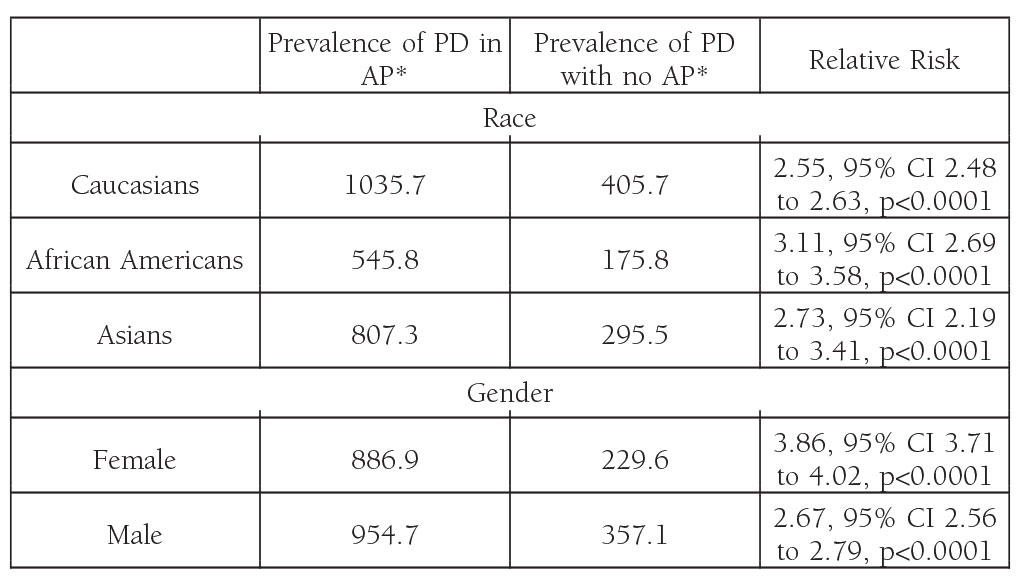Introduction: Aggregated alpha synuclein, a pathologic feature of Parkinson’s disease, has been found to be present in enteric neurons. As these aggregated proteins appear in the gastrointestinal tract early in the onset of the Parkinson’s disease, the GI tract may have a role S-1409 SSAT Abstracts in the development of disease. There has been conflicting reports on whether appendectomies increase the risk of Parkinson’s disease. To this date, there is a lack of large scale epidemiological data of this phenomenon in the US population. Aims and Methods. The aim of this study was to investigate if appendectomies increase the risk of Parkinson’s disease, in a large population based commercial database. The database used was Explorys Inc. (Cleveland, OH, USA) which contains electronic health records from 26 major integrated US healthcare systems. We identified patients who underwent appendectomies and those who were diagnosed with Parkinson’s disease based on Systemized Nomenclature of Medicine – Clinical Terms. We chose a washout period of 6 months to the development of Parkinson’s disease after appendectomies. We compared the prevalence of Parkinson’s disease in the general population to those with appendectomies. Results Of the 62,218,050 in the database, we identified 488,190 patients who underwent appendectomies. A total of 4470 cases of Parkinson’s disease were observed in patients with appendectomies, and 177,230 cases of Parkinson’s disease in patients without appendectomies. The overall Relative Risk (RR) of developing Parkinson’s disease in patients after appendectomies was 3.19, 95% CI 3.10 to 3.28; p<0.0001 compared to those who did not undergo the procedure. Patients aged 18-64 (RR 4.27, 95% CI 3.99 to 4.57, p<0.0001) and those aged ≥ 65 (RR 2.20, 95% CI 2.13 to 2.27, p<0.0001) both had an increased risk of developing Parkinson’s disease. The gender prevalence and race based prevalence are described in Table 1. As demonstrated, Caucasians, African Americans, and Asians were at an increased risk of Parkinson’s disease after appendectomies. The prevalence distribution with age is demonstrated in Figure 1. Conclusion Appendectomies increase the risk of Parkinson’s disease in this large, population based, epidemiological study. This increase in risk occurs over all age groups, and regardless of gender or race. One limitation of the study to note is while a washout period was conducted, the time after appendectomy to the development of PD cannot be determined from the database.

Figure 1: Prevalence/100,000 of Parkinson’s disease in patients with appendectomies (PD in AP) and patients without appendectomies (PD with no AP) Prevalence of Parkinson’s disease in patients with Appendectomy (PD in AP), and without appendectomies (PD with no AP), as well as Relative Risk of Parkinson’s disease in patients with Appendectomies vs no Appendectomy.

* All prevalences described per 100,000.
